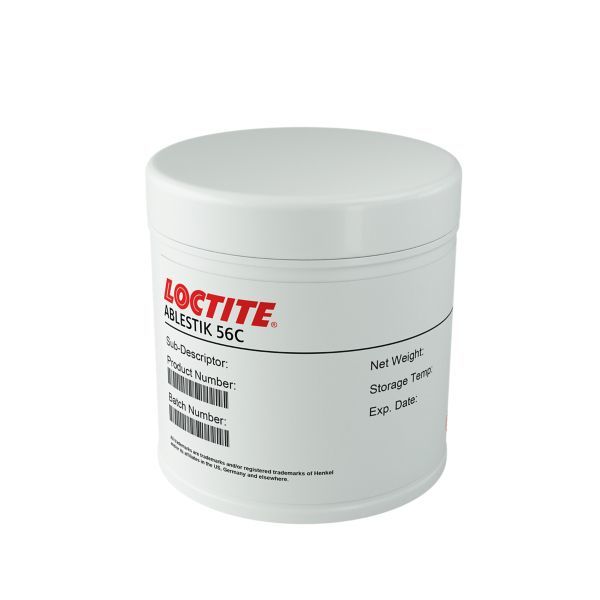LOCTITE ABLESTIK 56C
- High bond strength
- Very low temperature cure
- Passes NASA ougassing
Product Description
LOCTITE ABLESTIK 56C adhesive is designed to make electrical connections where hot soldering is impractical or to make electrical connections to conductive plastics at locations which cannot be subjected to high temperatures.
LOCTITE ABLESTIK 56C can be used with a variety of catalysts. For more information on mixed properties when used with other available catalysts, please contact your local technical service representative for assistance and recommendations.
LOCTITE ABLESTIK 56C in the CAT 9 KIT is used in a 100:2.5 ratio and passes NASA outgassing standards. The specifications in this page are for the cured CAT9 mix. It is an assembly two component adhesive that works on metals, glass, ceramic and plastic surfaces with an operating temperature of -60 to 120°C.
Cure Schedule
- 2 hours @ 50°C
Technical Specifications
| Thermal Properties | |
| Glass Transition Temperature (Tg) Glass Transition Temperature (Tg) The glass transition temperature for organic adhesives is a temperature region where the polymers change from glassy and brittle to soft and rubbery. Increasing the temperature further continues the softening process as the viscosity drops too. Temperatures between the glass transition temperature and below the decomposition point of the adhesive are the best region for bonding. The glass-transition temperature Tg of a material characterizes the range of temperatures over which this glass transition occurs. | 80 °C |
| Thermal Conductivity Thermal Conductivity Thermal conductivity describes the ability of a material to conduct heat. It is required by power packages in order to dissipate heat and maintain stable electrical performance. Thermal conductivity units are [W/(m K)] in the SI system and [Btu/(hr ft °F)] in the Imperial system. | 3 W/m.K |
| Electrical Properties | |
| Volume Resistivity Volume Resistivity Volume resistivity, also called volume resistance, bulk resistance or bulk resistivity is a thickness dependent measurement of the resistivity of a material perpendicular to the plane of the surface. | 4.0x10-4 Ohms⋅cm |



